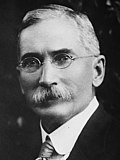This article needs additional citations for verification .(December 2009) |
| |||||||||||||||||||||||||||||||||||||||||||||
All 135 seats in the House of Assembly 68 seats needed for a majority | |||||||||||||||||||||||||||||||||||||||||||||
|---|---|---|---|---|---|---|---|---|---|---|---|---|---|---|---|---|---|---|---|---|---|---|---|---|---|---|---|---|---|---|---|---|---|---|---|---|---|---|---|---|---|---|---|---|---|
| Registered | 413,136 | ||||||||||||||||||||||||||||||||||||||||||||
| Turnout | 77.23% ( | ||||||||||||||||||||||||||||||||||||||||||||
| |||||||||||||||||||||||||||||||||||||||||||||
 Results by province | |||||||||||||||||||||||||||||||||||||||||||||
| |||||||||||||||||||||||||||||||||||||||||||||
| Part of a series on the |
| Politics of South Africa |
|---|
 |
General elections were held in South Africa on 17 June 1924, [1] electing 135 members of the House of Assembly. Considered a realigning election, rising discontent with the government of Jan Smuts led to the defeat of his government by a coalition of the pro-Afrikaner National Party and the South African Labour Party, a socialist party representing the interests of the white proletariat. [2]
Contents
Smuts had angered South African nationalists by his moderate stance on South African independence from the British Empire. The worldwide depression after the end of the First World War had led to a strike in South Africa, known as the Rand Rebellion, which had been defused through a combination of military force and negotiation with the outgunned unions, earning Smuts the enmity of the labour vote. As a consequence Smuts's SAP was defeated by a Nationalist–Labour Pact, J. B. M. Hertzog formed the government and became Prime Minister – a position he was to hold until 1939.



